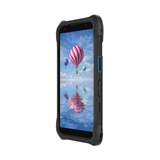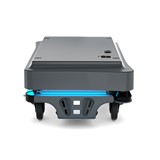Academics and students from the Department of Electrical and Computer Engineering at the Stevens Institute of Technology in the United States, are working on research that has the potential to significantly reduce the road toll associated with drivers who insist on using their mobile phones while their car is moving.
According to Dr Yu-Dong Yao, Department Director for Electrical and Computer Engineering, their research addresses the problem of distinguishing between a driver and passenger using a mobile phone, which is a key milestone for enabling numerous driver safety and phone interface enhancements.
The research was led by Dr. Yingying Chen at Stevens and Dr Marco Gruteser and Dr Richard Martin of WINLAB at Rutgers University. The other authors of the paper, "Detecting Driver Phone Use Leveraging Car Speakers," are Jie Yang, Simon Sidhom, Gayathri Chandrasekharan, Tam Vu, Nicolae Cecan, and Hongbo Liu.
The team developed a mobile phone detection scheme using an acoustic approach wherein a phone leverages the built-in Bluetooth and car stereo to generate a series of high frequency beeps over the stereo. The phone records these beeps, which are spaced in time across the left, right, and if available, front and rear speakers, and times their arrival. Using a differential ranging approach to estimate the phone's distance from the car's centre, a passenger or driver classification can be made.
Although a car is a relatively small space, a moving car with the radio on or windows down is an extremely complex acoustic environment. Despite this multipath noise, experimental trials with the team's detection technique, using two different phones in two different cars, demonstrated that the customised beeps are imperceptible to most drivers yet robust to background noise. They achieved accuracy in pinpointing a driver's phone up to 95 per cent of the time, with a low false positive rate.
Their passive technology approach reflects statistics that demonstrate hands-free phone operation has not effectively reduced phone-related accidents. While simply conducting a mobile phone conversation provides more than enough distraction to increase a driver's accident risk, the wide range of activities available on mobile devices — including texting, checking email, using navigation, and even playing games while driving — has the potential to create extremely dangerous situations.
Mitigating dangerous driver behaviour requires a detection technique such as proposed and tested by Dr Chen and her colleagues.Their demonstrated success provides a foundation for future applications that will assist drivers to maintain safer mobile phone habits.
As an Assistant Professor at Stevens, Dr. Chen leads the Data Analysis and Information Security Laboratory (DAISY Lab), which facilitates research into access and security of data on wireless networks. She has been the PI on multiple National Science Foundation (NSF) grants as well as the recipient of the prestigious NSF CAREER Award.
Dr Chen's research addresses wireless security and the challenges faced as wireless networks become increasingly pervasive and ubiquitous. Her work supports new approaches to conventional and wireless security by building location-oriented information into the wireless stack.


-160x160-state_article-rel-cat.png)









-160x160-state_article-rel-cat.png)



-160x160-state_article-rel-cat.png)





